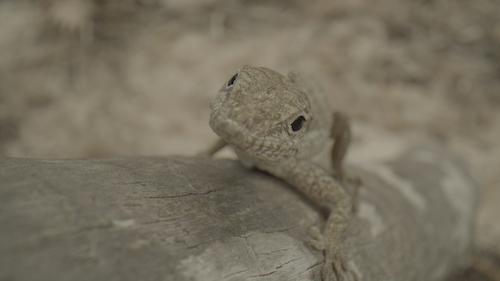Communiqué
EVOLUTION EARTH continues with “Islands” where evolution is playing out at superspeed – Sept. 13 at 10 pm
< < Back toPBS CLIMATE SERIES, “EVOLUTION EARTH,” UNCOVERS REMARKABLE WAYS ANIMALS ADAPT WITH CHANGING PLANET
Evolutionary Biologist Dr. Shane Campbell-Staton Narrates Extraordinary Stories of Nature’s Resilience
At the front lines of climate change, animals have a surprising story to tell in the newest PBS environmental docu-series, EVOLUTION EARTH.

“As an evolutionary biologist and professor, I enjoy exploring new ways to help people understand and get excited about the changing world around us,” said Dr. Campbell-Staton. “I am grateful for another opportunity to share my expertise on PBS platforms and to inspire exploration into our planet’s unique and awe inspiring ecosystems.”
Heading out across the globe to distant wilds and modern urban environments, five episodes track how animals migrate, ingeniously adapt their behavior and even evolve in accelerated, unexpected ways. Documenting this rapid change are the scientists, filmmakers, and local communities recording the animals’ stories. EVOLUTION EARTH tells a tale of resilience that redefines our understanding of evolution and hints at how nature can show a path towards a sustainable future for Planet Earth.
“PBS is committed to providing best in class environmental programming and we’re excited to explore these surprising stories of resilience and adaptation,” said Bill Gardner, Vice President, Multiplatform Programming & Head of Development at PBS. “Amplified by one of our most engaging science storytellers, Dr. Shane Campbell-Staton, this project combines the best resources in public media to explore these dynamic stories about our planet and its life.”
Episodes of EVOLUTION EARTH focus on evolution stories at the frontiers of the changing planet forged by the forces of the environments they are set in, and allows viewers to witness nature’s remarkable resilience.

A brief overview of each episode including premiere dates on PBS, PBS.org and the PBS app is outlined below:
Episode 2: “Islands”
Premieres: Wednesday, Sept. 13, 10-11 p.m. ET
Islands are like miniature simplified Earths, where evolution is playing out at super speed right before one’s eyes. Journey from the Galapagos to the edge of Antarctica to seek out animals responding to the changing planet in extraordinary ways.
Episode 3: “Heat”
Premieres: Wednesday, Sept. 20, 10-11 p.m. ET
Travel to the hottest and driest extremes to see animals go to extraordinary lengths to survive. From the Sahara Desert to Australia, animals provide new clues about the changing planet and what it will mean for the future of our heating world.

Episode 4: “Ice”
Premieres: Wednesday, Sept. 27, 10-11 p.m. ET
At the planet’s frozen extremes, shifts in animal movement and behavior reveal vital information about our future world. Examine polar bears in the Arctic, penguins in Antarctica and other animals surviving in icy worlds.
Finale/Episode 5: “Grasslands”
Premieres: Wednesday, Oct. 4, 10-11 p.m. ET
Grasslands are one of the planet’s most important, yet most overlooked habitats. In the final episode of EVOLUTION EARTH, follow scientists as they discover animal species with the power to transform and restore the grasslands, turning them into carbon sinks that could slow climate change.
For more information on EVOLUTION EARTH, including clips and episode previews, visit www.pbs.org. Viewers are also encouraged to engage in online conversation about the series by tagging @PBS and using #EvolutionEarthPBS on Facebook, Twitter and Instagram.

